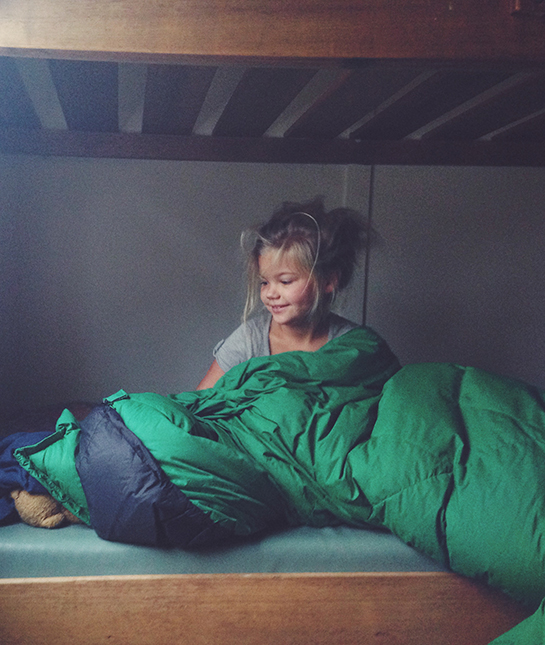Sweet Slumber

Getting enough sleep is a key part of happy parenting—for Baby as well as mothers. However, many moms know that getting their children to nap properly can be anything but dreamy. Elizabeth Pantley, the author of "The No-Cry Nap Solution" and "The No-Cry Sleep Solution" among other respected parenting books, took the time to chat with Mom.me about the healthy, simple ways to get your child to nap properly (and for you to catch as many zzz's as possible). Sweet dreams!
Rule 1: Know Why Napping Is Crucial

Elizabeth Pantley explains that parents need to keep a careful watch on naps, because "the number of hours that your child sleeps is an incredibly important factor for his health and well-being. A sleep study completed by Dr. Avi Sadeh at Tel Aviv University demonstrates that even a one-hour shortage in appropriate sleep time will compromise a child’s alertness and brain functioning and increase fatigue." This means keeping track of how and when your child is sleeping. "The length of time that your child is awake from one sleep period to the next will also have a powerful impact on his temperament, mood and behavior, so it is one more important consideration," says Pantley. "The span of awake time is very, very short for a newborn baby and this gradually increases over time."
Rule 2: Know Much Nap Time Is Enough for Your Child's Age

In her book "The No-Cry Sleep Solution" Pantley includes a chart showing the amount of time a child should be sleeping (including nighttime and naptime) for a range of ages. For example, newborns "sleep 16-18 hours per day, distributed evenly over 6 to 7 sleep periods." One-year-olds need one or two naps, with a combined total naptime of two to three hours' duration, and nighttime sleep of 11.5 to 12 hours. Two-year-olds generally take one nap, for one to two hours, and a nighttime sleep of 11 to 12 hours. "All children are different," Pantley notes, "and a few truly do need less (or more) sleep, but the vast majority of children have sleep needs that fall within the range."
Rule 3: Keep Yourself Well-Rested

"Every new mother has heard the advice to nap while baby naps, and for good reason," say Pantley. "A new mother has gone through a physical and emotional marathon. Her newborn is waking her up at night, as often as every hour or two. Plus she is adjusting to an entirely new life, taking care of this new little person 24/7. These are great demands on a human being—and daily naps can help a mother adjust." Napping can also improve your mood. "New mothers are more likely to suffer from the baby blues and postpartum depression if they don’t take care of their own sleep needs," says Pantley. "Even a twenty-minute nap can rejuvenate you, so definitely make it a priority."
Rule 4: Ask for Help to Ensure That You Are Well-Rested

"Taking care of your own sleep needs is far more important than folded laundry or a cleanly swept kitchen floor," says Pantley. "Many of your visitors will ask, 'Is there anything I can do?' and most of them truly want to help! So don’t be afraid to ask Grandma, a loving aunt, or your best friend to watch the baby for an hour or two so that you can take a nap."
Rule 5: Know When Your Child May Outgrow Naps

Pantley says nap time decreases with age—but that doesn't mean you should abandon naps completely. She explains, "Approximately 85 percent of two-year-olds, 65 percent of three-year-olds, 25 percent of four-year-olds and 15 percent of five-year-olds take a nap every day, or almost every day. Biologically speaking, children are ready to give up daily naps sometime between the ages of three and five, if they get an adequate amount of nighttime sleep." However, naps are healthy for people of any age. "Regardless of the statistics or the averages, if your child needs a nap he falls into the 100 percent category: 100 percent of the children who need a nap should take a nap," says Pantley. "Even if your child does fine all day without a nap, new research points to the fact that naps continue to be beneficial for human beings throughout their entire lives. So when you wonder, 'When should my child give up naps?' the best answer may be never."
Rule 6: Know the Signs That Your Child Needs a Nap

No matter what their age, the following indications show that your kid should take a rest during the day, says Pantley. "If they respond in a positive or neutral way to nap time and fall asleep easily. If they resist or fight the idea of a nap, but eventually fall asleep and sleep an hour or longer. If your child wakes up in the morning in a good mood, but gets whiny and cranky as the day progresses or has more patience early in the day, but is more easily aggravated later on. If she cries more often or more easily in the evening than she does early in the day. If your child demonstrates coordination deterioration over the course of the day or has an afternoon or early evening slump in energy, but gets a second wind later in the day." Finally, says Pantley, if your child shows the classic signs of sleepiness, "in the afternoon or early evening, such as yawning, rubbing eyes or looking slightly glazed," it means they need more shut-eye.
Rule 7: Let a Sleeping Babe Lie

"For the most part," says Pantley, "you should let a sleeping child sleep. However, this assumes your child has a proper bedtime and sleeps plenty of hours at night. If a child stays up too late, wakes up too early, or simply isn’t getting enough nighttime sleep, a nap schedule adjustment is important. In this case, it’s OK to gently wake a child after an appropriate nap length so that nighttime sleep can be consistent."
Rule 8: Natural Light (and Darkness) Are Key for Healthy Napping

Pantley believes in the power of the sun in supporting your child's natural circadian rhythm, advising you to "expose your child to daylight and activity first thing in the morning. Get your child outside to play—several times a day, every day." As well, make sure to avoid bright light pre-nap time or before nighttime snoozing, Pantley says, "Keep the hour before bedtime quiet and darkened."
Rule 9: Keep Pre-Sleep Activities Calm, Relaxing, and Regular

All of the following tips will help make nap time as stress-free and sleep-inducing as possible—for naps as well as bedtime. Pantley advises, "Keep the same bedtime and nap times seven days a week. Encourage a daily nap or rest period. Develop a consistent, calming, happy bedtime and nap time routine. Create a cozy, comfortable sleep environment. Provide a healthy, low-sugar meal or snack an hour or two before sleep time. Read to your child before bed. Finally, play white noise or soft music at sleep time."



